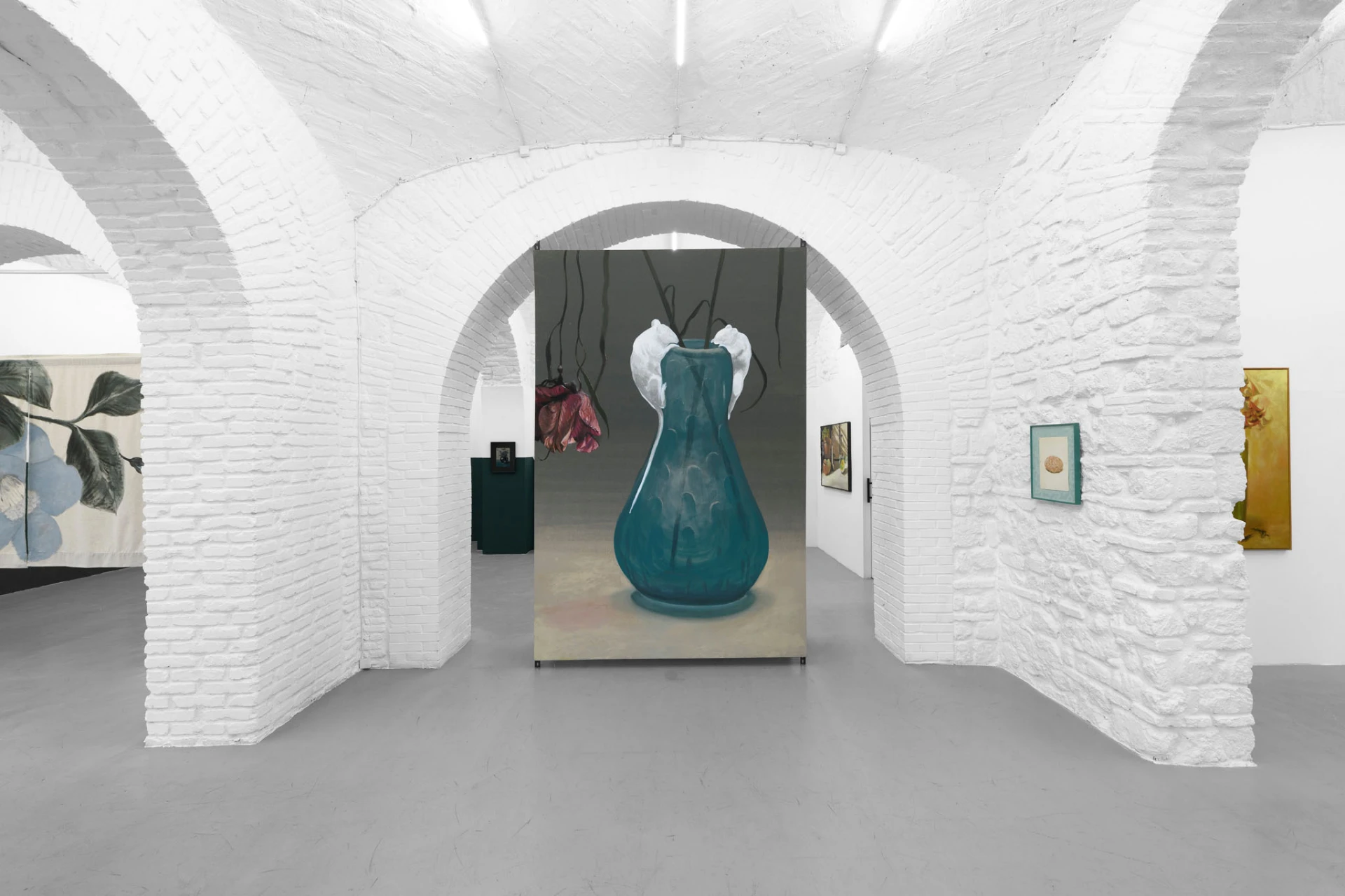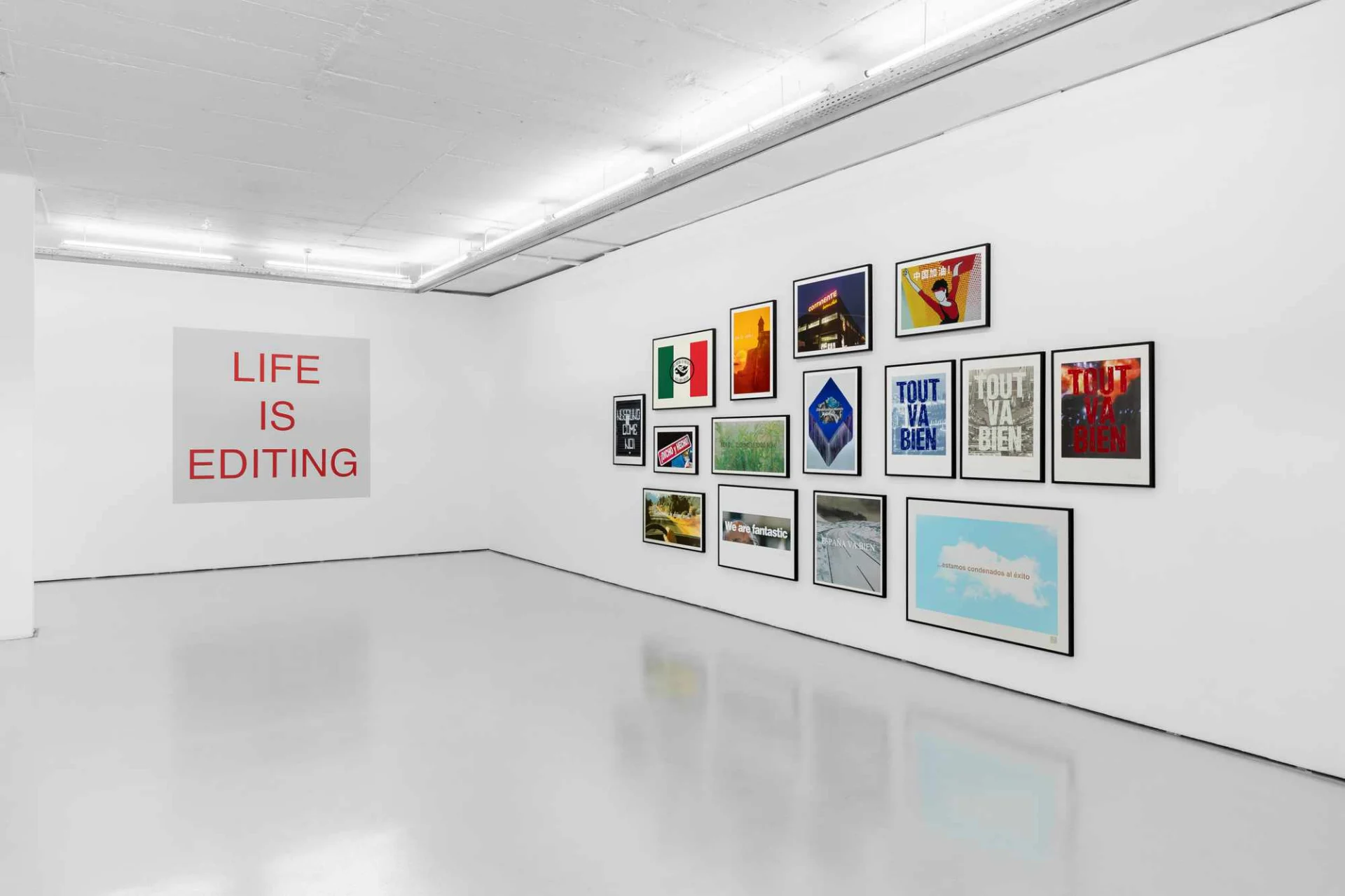article
Life and other forms
"Outros Lugares / Everywhere" is an exhibition by Muntadas at Galeria Cristina Guerra in Lisbon, which follows, chronologically, the opening of two landmark institutional solo exhibitions by the same artist: "Lugar Público", at Sesc Pompeia in São Paulo, and "Sobre / About Asia", at Casa de la Moneda in Madrid, which opened in April.
Both exhibitions showcase research projects focused in beloved geographies with which he maintains a constant and close working relationship. Muntadas is an artist who consistently speaks to us of the artistic project as a working methodology, based on flexible lines of research contextualized within a given environment.
When you enter the gallery in Lisbon, you'll see ‘LIFE IS EDITING' printed in red capital letters on a white background. It's a landscape image, one with a clear view, that provides tools for the times to come. The landscape, as natural as it is cultural, is deeply political, and its cutouts portray historical times. Life is editing feels like a revelation, delivering a mature image of life, containing the possibility of continuous remaking and refinement, as opposed to the anxiety-inducing and relentless sensation of the first and only time.
A space for reconciliation with the past is created and the future is conceived, suggesting that the precious material of life, made memory, remains capable of being edited for posterity.
In research on life, the first image is extensive, like a single plane crossing the blue sky. An airplane always knows where it's going, especially since it never takes off without knowing its destination. The kinetics of flight are presented to the world as a controlled system, unlike the dream of flying, as birds do.
The Arctic tern is the bird that travels the greatest distance in its lifetime, in continuous migrations, drawn in an "S" shape over the Atlantic Ocean, a distance equivalent to the distance to and from the Moon. And the "S" that it draws repeatedly in the ocean, back and forth, forms infinity, which presents itself in a Cartesian way to explain the world itself.
The suggestion of vastness, the sky, contrasts with the limits of the world map. The world map is one of the most reproduced and viewed images of all time: in classrooms, dining rooms, living rooms, places of worship, and places of rest. Perhaps political and economic systems seek in the landscape the clues to their systematization and consequent codification of life, which, by osmosis or reflex, acquires its own modes—from the landscape, of course. The same reason why we feel relieved when encountering the raging, limitless sea, or always find, from a high observation deck, the solution to vertigo.
On the opposite wall, the City Sentences series presents a set of silkscreens that could be a situationist map of several countries. "Continente bom dia" (Good morning, Continent) is the sentence that appears in a new edition that situates Portugal in the present time. In a bright, advertising LED, it notes the shadow of the present day, marked by a collective embarrassment driven by fear, while recalling that half-naive, half-unifying characteristic of continuing to say "good morning" every day.
When it comes to fear, we always have more questions than answers. The video installation Alphaville (2011), that shows us a gated community built in São Paulo in the 1970s, symbolizing an ideal of security that reveals itself as a synthesis of isolation, exclusion, and extreme surveillance, seems to be resolved in Lugar Público (2025), the exhibition inaugurated at Sesc Pompeia, in the same state, which, unlike the private complex, invites everyone to be there: "Where are we going?"
Life. Fire, air, earth, water. Smell, taste, sight, hearing, touch. Death. Despite the apparent duality of circumstances, the proposition of life implies Reflections on death. Universal ideas are informed by the landscape, with detailed, technical images: the flight of the bird and the safety instructions on the plane, the world map, and singular and collective identities, the five senses and the choice of the coffin for finitude. From the whole to the particular and vice versa, this is still the movement of the philosophical gesture that, like the "S" of the Arctic tern, will find, instead of the World, the Moon or other celestial bodies.
I return to the very first image: Life is editing - which is to say, we carry on. É preciso continuar[1] (We must carry on).
The exhibition by Antoni Muntadas is on view at Galeria Cristina Guerra until September 20.
[1] Regina Parra, São Paulo, 2018
ADVERTISING
Previous
article
-94e37.jpg)
11 Jul 2025
Torcer, Amarrar e Pender: An Articulated Narrative
By Ayşenur Tanrıverdi
Next
article

14 Jul 2025
Hidden Aegis: Thomas Braida in Rome
By Diogo E S Dietl
Related Posts
